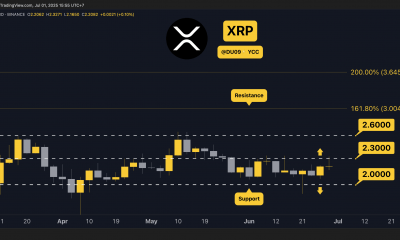Uncategorized
Inflation is so bad in Zimbabwe that the country is now issuing gold coins to its citizens

As a global inflationary wave continues to send costs soaring for everything from fuel to groceries, some governments are getting creative in reining in prices.
Zimbabwe, a country of less than 15 million people in southern Africa, will begin issuing gold coins to its citizens as a hedge against inflation later this month, the country’s central bank announced this week.
The gold coins will be introduced as a “store of value,” according to a statement by the central bank governor John Mangudya, meaning that Zimbabweans can exchange them in the future without worrying about the coins deteriorating in value as has happened with the local Zimbabwean dollar, which has been devalued by over 40% since the beginning of the year. They will be available to the public starting on July 25, and will be sold “based on the prevailing international price of gold and the cost of production.”
The public will be able to buy gold coins using both Zimbabwean dollars as well as the U.S. dollar, and other foreign currencies. The Zimbabwean dollar is the official currency in the country, but the U.S. dollar and other foreign currencies were considered legal tender between 2009 and 2019, and the greenback is still widely used and accepted.
Buyers can either hold on to the coins or place them in the custody of a bank. Holders can trade the coins for cash at any point, although Mangudya’s statement says that the coin can “also be used for transactional purposes.”
The gold coin’s introduction comes as the Zimbabwe central bank attempts to control soaring inflation in the country, where the annual rate hit 192% last month.
Ever since the 1970s, gold has been one of the most popular commodities used to hedge against inflation and war, as the metal tends to rise in value as the purchasing power of currencies decline, although this is the first time Zimbabwe has turned to the commodity as a potential currency replacement.
Investors tend to turn to gold in times of market uncertainty and rising inflation, as happened last February shortly before Russia’s invasion of Ukraine, when skittish investors sent the metal’s value soaring to a two-year high.
Gold’s status as a long-term hedge against inflation has come into question in recent years, with several experts pointing out its history of rare positive returns for investors since the 1970s. But in Zimbabwe, which has been dealing with inflation for years, any hedge that can minimize the impact of high prices is sorely needed.
This is not the first time that Zimbabwe has suffered from out-of-control inflation. In 2007, Zimbabwe’s economy entered a period of hyperinflation, a term used to describe very high, accelerating, and generally out-of-control price increases in an economy, usually when the inflation rate exceeds the 50% mark.
The global economic crisis of the late aughts forced Zimbabwe to drastically increase its money supply in response to rising national debt. Hyperinflation in the country led to the introduction of the world’s first and so-far only 100-trillion-dollar note in 2009.
The turn to using the U.S. dollar and other foreign currencies as legal tender in 2009 and the reversion back to the Zimbabwean dollar in 2019 did little to quell the country’s inflation, which hit an annual high of 557% in 2020.
Since reintroducing the Zimbabwean dollar, the currency has plunged again. To help stabilize the economy from rising inflation, the government announced in June that it would be keeping the U.S. dollar and other foreign currencies as legal tender for at least the next five years.
This story was originally featured on Fortune.com
Uncategorized
BofA Securities maintains Amazon.com at ‘buy’ with a price target of $154.00
Uncategorized
Six people in critical condition, one still missing after Paris blast – prosecutor

5/5
© Reuters. French firefighters and rescue forces work after several buildings on fire following a gas explosion in the fifth arrondissement of Paris, France, June 21, 2023. REUTERS/Gonzalo Fuentes
2/5
PARIS (Reuters) – Six people remained in a critical condition and one person was believed still missing on Thursday, one day after a blast ripped through a street near Paris’ historic Latin Quarter, the city’s public prosecution office said. “These figures may still change,” prosecutor Maylis De Roeck told Reuters in a text message, adding that around 50 people had been injured in the blast, which set buildings ablaze and caused the front of one to collapse onto the street. Of two people initially believed missing, one has been found in hospital and is being taken care of, the prosecutor said, adding: “Searches are ongoing to find the second person.” Authorities have not yet said what caused the explosion, which witnesses said had followed a strong smell of gas at the site. The explosion led to scenes of chaos and destruction in the historic Rue Saint Jacques, which runs from the Notre-Dame de Paris Cathedral to the Sorbonne University, just as people were heading home from work. It also destroyed the facade of a building housing the Paris American Academy design school popular with foreign students. Florence Berthout, mayor of the Paris district where the blast occurred, said 12 students who should have been in the academy’s classrooms at the time had fortunately gone to visit an exhibition with their teacher.
“Otherwise the (death toll) could have been absolutely horrific,” Berthout told BFM TV. She said three children who had been passing by at the time were among the injured, although their lives were not in danger.
Uncategorized
4 big analyst cuts: Alcoa & DigitalOcean shares drop on downgrades

© Reuters.
Here is your Pro Recap of the biggest analyst cuts you may have missed since yesterday: downgrades at Alcoa, DigitalOcean, Teleflex, and Xcel Energy.InvestingPro subscribers got this news in rapid fire. Never be left in the dust again.Alcoa stock drops on Morgan Stanley downgrade Alcoa (NYSE:) shares fell more than 3% pre-market today after Morgan Stanley downgraded the company to Underweight from Equalweight and cut its price target to $33.00 from $43.00, as reported in real time on InvestingPro.The firm sees a significant decline in consensus estimates, and as negative earnings revisions materialize, it believes the stock will face downward pressure and underperform.The analyst’s estimates for EBITDA in Q2, 2023, and 2024 are substantially lower than the consensus. The stock is currently trading above its historical average. The firm said its downward revisions in earnings estimates and price target are attributed to the company’s high operating leverage to aluminum prices.DigitalOcean stock plunges on downgradePiper Sandler downgraded DigitalOcean (NYSE:) to Underweight from Neutral with a price target of $35.00. As a result, shares plunged more than 5% pre-market today.The company reported its last month, with revenue beating the consensus estimate, while EPS coming in worse than expected. Furthermore, the company provided a strong outlook, which was above the Street estimates.2 more downgradesTeleflex (NYSE:) shares fell more than 3% yesterday after Needham downgraded the company to Hold from Buy, noting that UroLift expectations may still be too high.According to Needham, their checks indicate that urologists are reducing their use of UroLift due to its retreatment rates, reimbursement cuts, and increasing use of competing procedures. This is also supported by their Google Trends data analysis, which indicates decreasing search interest in UroLift.BMO Capital downgraded Xcel Energy (NASDAQ:) to Market Perform from Outperform and cut its price target to $64.00 from $69.00 to reflect the lower-than-expected terms of the company’s regulatory settlement in Colorado.Amid whipsaw markets and a slew of critical headlines, seize on the right timing to protect your profits: Always be the first to know with InvestingPro.Start your free 7-day trial now.

 Forex3 years ago
Forex3 years agoForex Today: the dollar is gaining strength amid gloomy sentiment at the start of the Fed’s week

 Forex3 years ago
Forex3 years agoUnbiased review of Pocket Option broker

 Forex3 years ago
Forex3 years agoDollar to pound sterling exchange rate today: Pound plummeted to its lowest since 1985

 Forex3 years ago
Forex3 years agoHow is the Australian dollar doing today?

 Cryptocurrency3 years ago
Cryptocurrency3 years agoWhat happened in the crypto market – current events today

 World3 years ago
World3 years agoWhy are modern video games an art form?

 Commodities3 years ago
Commodities3 years agoCopper continues to fall in price on expectations of lower demand in China

 Economy3 years ago
Economy3 years agoCrude oil tankers double in price due to EU anti-Russian sanctions


























